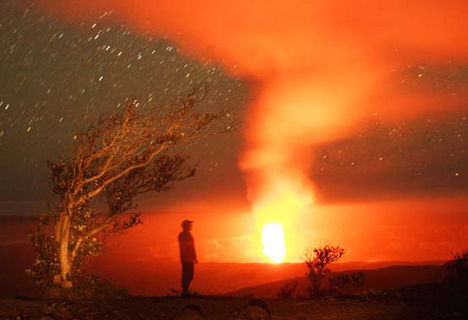
© Steve O'Meara
On Saturday March 19, 2011, astronomer Stephen James O'Meara watched the
rare Super Moon closely. Scientifically termed a lunar perigee-syzygy; a new or full Moon (syzygy) that coincides with the Moon at its closest approach to Earth (perigee) in 18 years.
O'Meara, didn't set out in life to find a connection between the Moon and volcanic eruptions, but destiny set him on a path to do just that. Since 1610, when the great scientist Galileo was attacked and condemned for presenting a new theory of the Universe, based on his scholarly telescope observations - that the Earth and planets revolved around the Sun and not the other way around - new scientific ideas have been difficult, if not impossible, to prove to the prevailing scientific community.
O'Meara has been a rogue scientist his entire life. "As a teen I piloted my Dad's lobster boat in Boston under a bridge, and success was highly dependent on the height of the tides whether I'd make it or not. I was acutely aware of the tides at all times, their height and unimaginable strength; a wrong decision meant disaster. I was very, very aware of the Moon's gravitational affect on Earth tides at a very early age." said O'Meara.
Slideshow: Erupting Volcano's Incredible Impact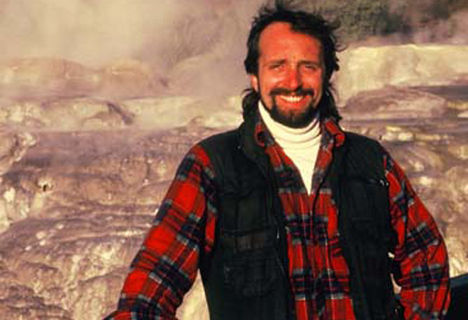
© Steve O'Meara
Steve recalled a twist of fate in 1970, "There was a huge line of about 100 people waiting to get a glimpse through the Harvard College 9-inch refractor. Twenty minutes passed with nothing happening, and people began to get irritated and leave. I stayed, and, in time, was standing inside the dome of the Harvard 9-inch f/12 Clark refractor, waiting patiently. I saw the Harvard astronomer, sweating to find something in the scope overhead. One glance upward, and I knew that he was struggling to find the Andromeda Galaxy. I asked the man (Larry Liebowitz),
"Are you looking for Andromeda?
"Yes," Liebowitz replied.
"Let me try, I can get it for you in a minute."
"No! this is a complicated and age-old instrument."
Slideshow: 10 Stunning Photos of Far Away Galaxies"I asked him to please let me try," He got up from the floor where he was straining his neck and said, 'Really?,' He handed the telescope over to me and I found the galaxy immediately. Larry then asked me to call everyone back and added, "But stick around. I want you to show me what you know." I helped him find many other distant celestial objects for the public. Larry was an astronomy graduate student and like most graduate students he didn't really know the sky except for in books. I stayed until sunrise showing him all the objects I knew how to find. He asked me to meet him at the Observatory at 8:00 a.m. when the business office opened. That morning I was presented with a key to the famous Harvard College Observatory. I could use the telescope at any time I wanted on my own. In return I had to work every open house for them. I was 14 years old, and I agreed.
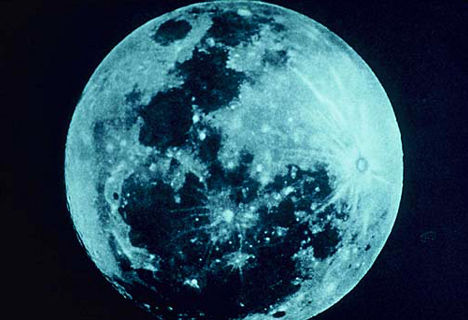
© Steve O'Meara
Since then O'Meara used the Harvard telescope for decades making important contributions to astronomical science. He took on projects for Harvard astronomers like the one for Dr. Fred Franklin, which led to Steve's brilliant pre-Voyager discovery of the dark and mysterious radial spokes in Saturn's rings (1974-1979). At age 27, Steve went on to be the first astronomer to accurately determine the visual rotation period for the planet Uranus (1984). In 1985, Steve defied every written word about the limits of the human vision and became the first person on Earth first to visually recover Halley's comet on its 76-year return, using a 24-inch telescope and bottled oxygen at Mauna Kea, Hawaii.
Steve's obsession with volcanoes started simultaneously with his astronomy passion when he was a kid. Steve said with a smile, "It all started with
A Little Golden Book: Dinosaurs. On the cover was a T-Rex chasing a Brontosaurus into the water; and behind them was the perfect edifice of an erupting volcano. I was hooked immediately."
On a five day
observing trip to Arenal Volcano in La Fortuna, Costa Rica O'Meara's disciplined astronomy background led him to recognize a pattern in the volcanic eruptions that correlated with lunar tides and the Moon and Sun's gravitational pull. The 'Light Bulb' was lit!"
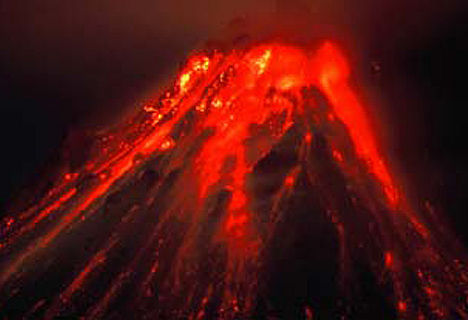
© Steve O'Meara
In the historic records a few people have noted lunar phases when viewing volcanic eruptions, but no one has ever investigated a serious link between the Moon and volcanoes and put it to a conclusive scientific test. Whether the Moon even has any affect on volcanoes has been a point of scientific controversy for decades.
As the Moon orbits Earth, the angles between the Sun, Earth and Moon change and create Moon phases.
Twice each day Earth's ocean tides go in and out and up and down. The gravitational pull of both the Moon and the Sun cause four daily tides (two low and two high) each day at 6.25 hour intervals. If you could look back at Earth from outer space, you'd be able to see these tides bulging out on both sides of the planet. In addition, every two weeks the tides go from minimum to maximum heights when the Sun and Moon align at New Moon and Full Moon and the gravitational pull is strongest. These two big, maximum monthly tides are called fortnightly or spring tides.
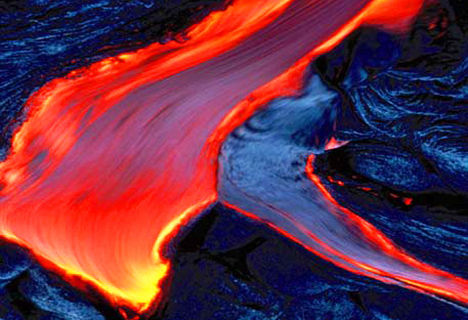
© Steve O'Meara
Although the Moon looks small, its power is tremendous because of how close it is to Earth. The actual physical Earth is 'pulled' by the Moon and and bulges by as much as eight inches. This is an amazing feat the "little" Moon performs. The movement of underground magma and the movement of ocean tides is very similar. Magma under Earth's fragile crust is fluid and circulating. Could the Moon pull it a few inches and force it out through a
crust weakened by earthquakes? Or give it an extra big push for large-scale eruption at an active volcano? Maybe the tides affect the gases inside the molten melt and help them to expand beyond some critical level - to the point of eruption. All eruptions are driven by the expansion of gases. O'Meara believes in theory that it seems plausible.
O'Meara smiles, "Good science requires good thinking. It leads to theories: like Galileo Galilei's concept of inertia (the resistance of a mass to a force acting on it), as well as the attractive force of gravity; and Albert Einstein's explanation of how energy released by nuclear reactions can power the stars with his simple equation, E = mc2 (Energy = mass times the speed of light squared). But a theory is not a scientific discovery. It is a model used to explain discoveries, observations, or thoughts. Proof of any theory (the truth) comes from further observations and testing."
Since his light bulb moment at Arenal O'Meara has been trying to prove a link between the Moon in Space and volcanoes here on Earth on a scientific detective story for two decades at more than 100 volcanoes. In 2000 he was funded by The National Geographic Expeditions Council and got tremendous supporting data. His investigations were made into a National Geographic Television Explorer movie entitled
Volcano Hunters.
Today O'Meara continues his life quest gathering the evidence he needs to prove his lunar/volcano correlation theory and he says "I will be closely observing this weekend's Super Moon."
As the famed mountaineer Reinhold Messner once said, "obstacles energize me!"
Donna O'Meara is an award winning writer/photographer living in Hawaii. She is currently finishing FIRE & ICE, a book about her adventure to Mt. Erebus. "Extreme Exposure" at The Annenberg Space for Photography is the first public showing of the Mt. Erebus volcano images.
If the moon affects our oceans and even our own moods and behaviours than logic must dictate that it influences volcanoes, earthquakes and weather.